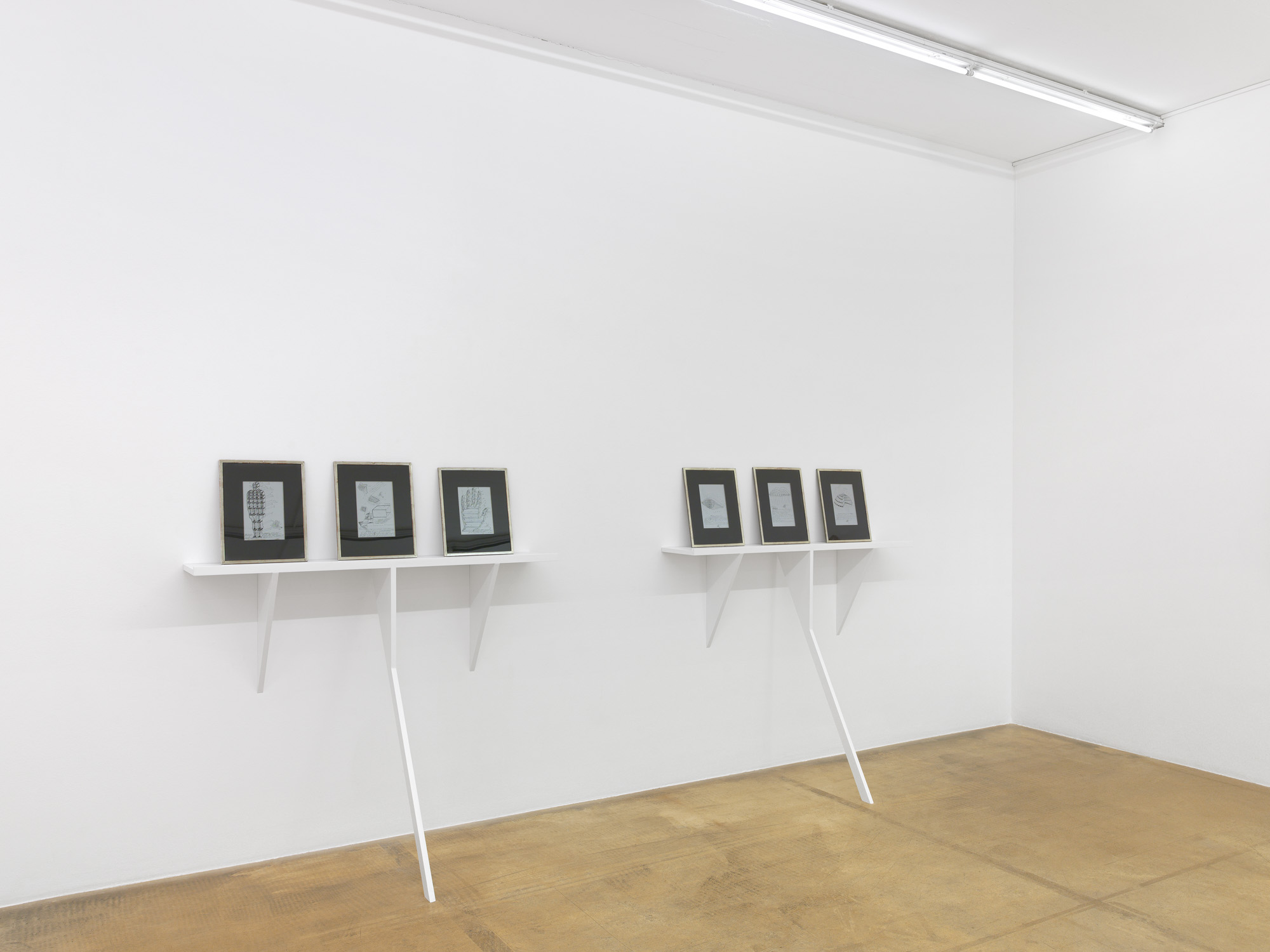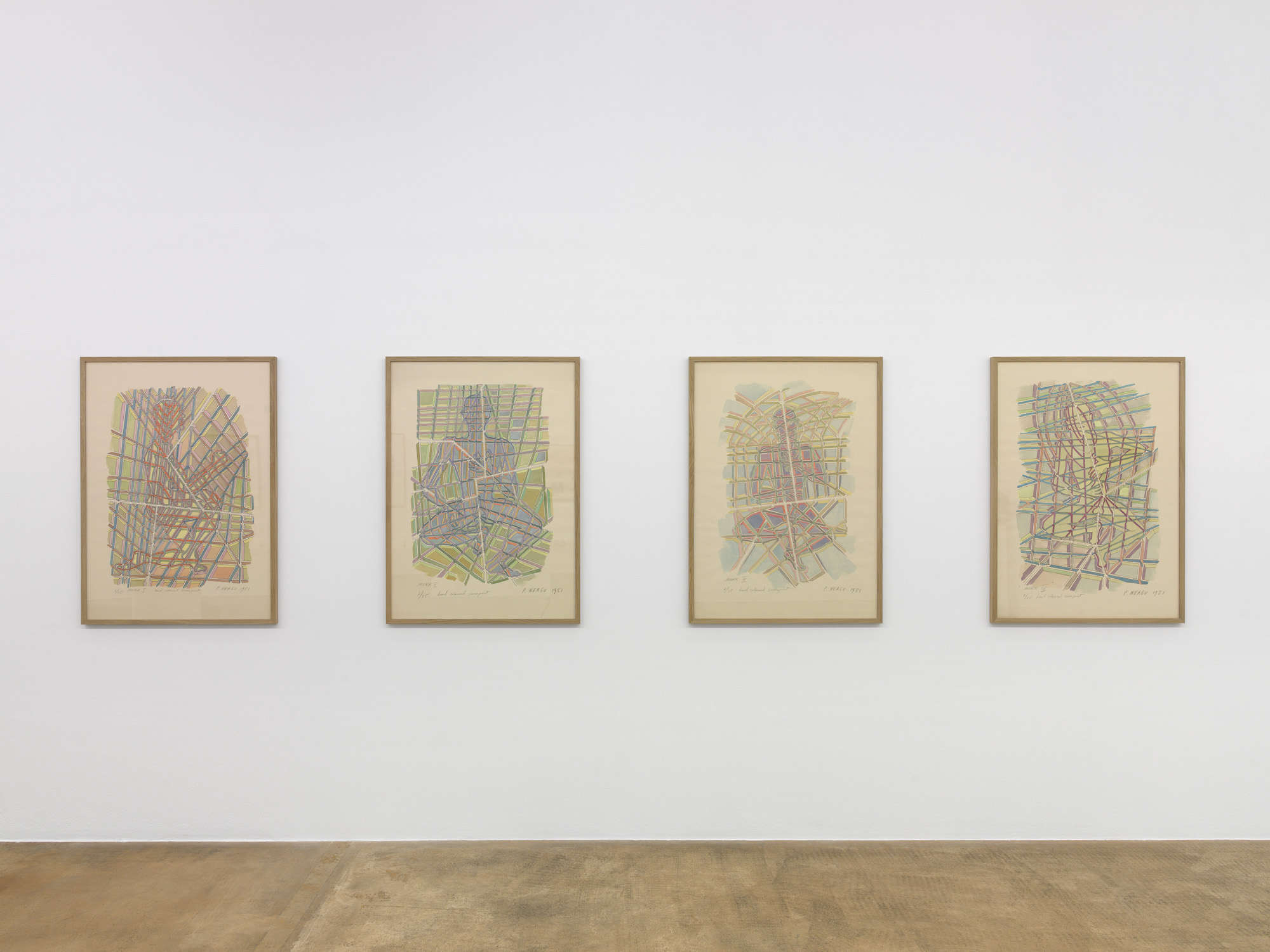Romanian-born artist Paul Neagu (1938–2004) worked first as an electrician and then as a topographer in his native Bucharest. After teaching himself philosophy and geometric drawing, he went on to study classical art at the Nicolae Grigorescu Academy of Fine Arts. He then spent some time traveling and exhibiting his works within the Soviet Union and later in Western Europe. In 1970, Neagu moved permanently to London with the help of Scottish curator Richard Demarco. Alongside his work as a practicing artist, Neagu taught at several of the city’s art schools, where his students included Anish Kapoor, Rachel Whiteread, Tony Cragg, and Marc Camille Chaimowicz.
Before settling in the UK, Neagu developed a deliberately restrictive sculptural practice, using a narrow range of inexpensive materials such as matchboxes, cardboard, wood, and leather to create a series of box-like structures, some of which were hinged. These pieces were exhibited in the streets of Bucharest, as captured in the 1969 film Neagu’s Boxes. In his Palpable Art Manifesto, published in Edinburgh in 1969 and inspired by his anthroposophical readings, Neagu set out the theoretical principles that would inform his future practice—a vision of art that is experienced with the five senses and that calls for humans to be at one with their environment. This approach is reflected in his Anthropocosmos series: honeycombed grid patterns divide the sensitive parts of the human body—fingers, hands, lips, ears, breasts—or, sometimes, the entire body, into hollow, rectangular cells.
Overlaid with a geometric grid in this way, the human figure becomes part of a system that Neagu named the “Generative Art Code,” reflecting his belief that our philosophical and social experiences are shaped by the dynamic interplay between three different aspects of our existence: our primal instincts (represented by the triangle), the order and rationality of Cartesian society (the rectangle), and the self-revelation that comes when we are freed from the shackles of norms and constraints (the circle). This emancipation can only be achieved through movement: jumping, dancing, and “going tornado”—a recurring theme in Neagu’s work. In 1972, having laid these theoretical foundations, Neagu established the Generative Art Group, a collective in whose name he signed a catalog and a number of works despite being the only non-fictitious member. The other four members, who were each given a name and a backstory, represented individual parts of a greater whole.
The most pivotal decade of Neagu’s career started in the early 1970s. His works were exhibited three times—in 1972, 1976 and 1981—at the Rivolta gallery in Lausanne, with which he had a close personal relationship. For each of those shows Neagu took a holistic approach, also designing the decor and staging elements. The exhibition at MAMCO featured a substantial body of engravings and drawings produced by Neagu for the Lausanne-based gallery, as well as a collection of archive documents provided by the Rivolta family. It paid tribute to a singular artist who preferred to stay out of the limelight but who, in his own unassuming way, made a lasting impact on the European art scene.
- Exhibition curated by Elisabeth Jobin
- With the support of the Rivolta gallery archives and The Paul Neagu Estate (UK)

